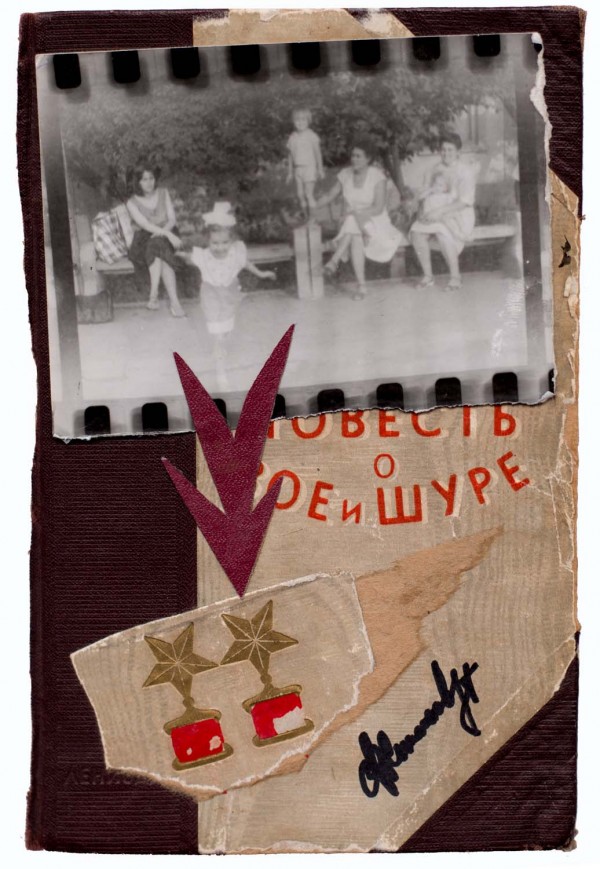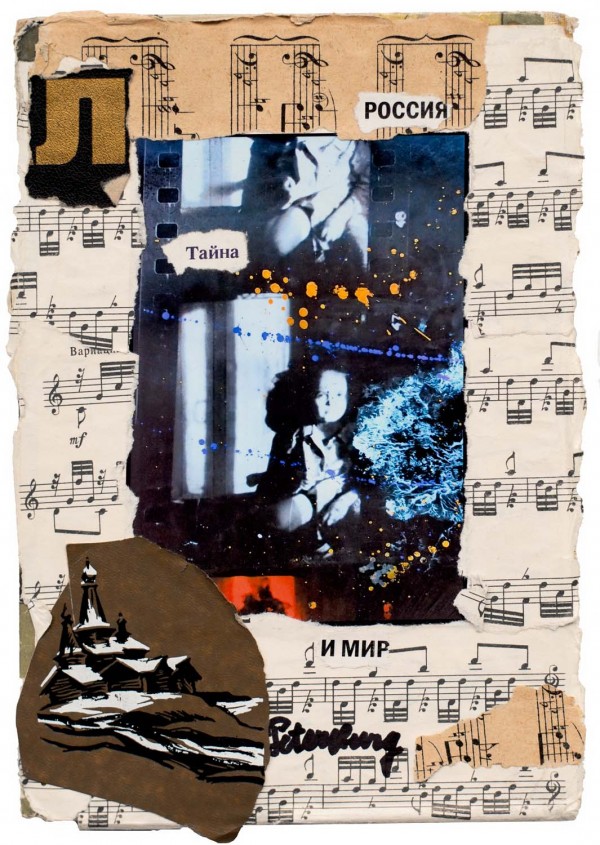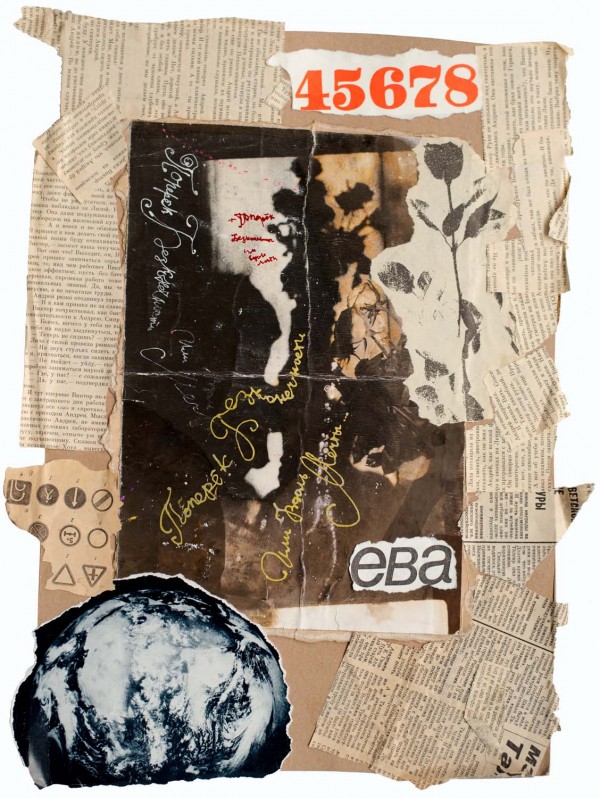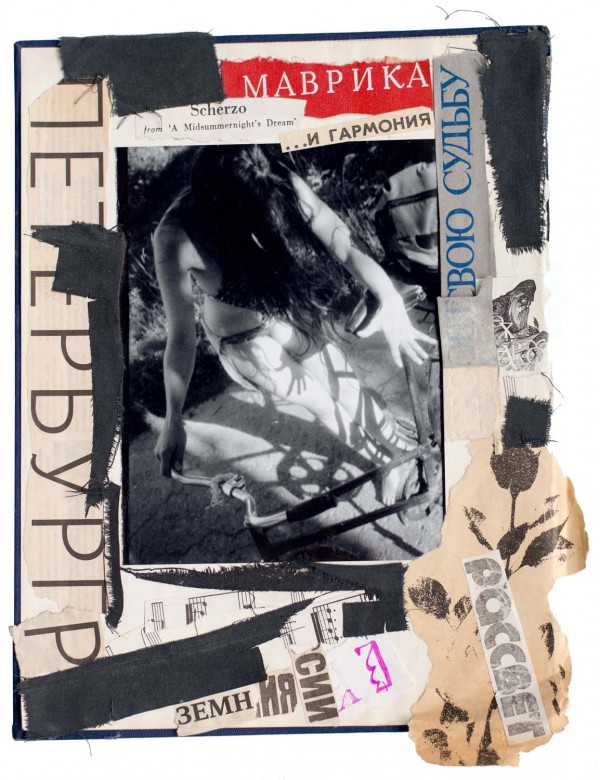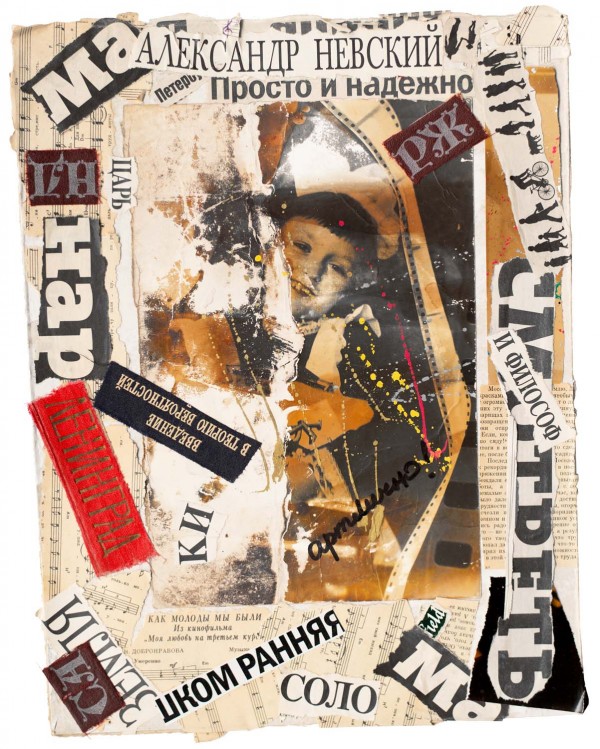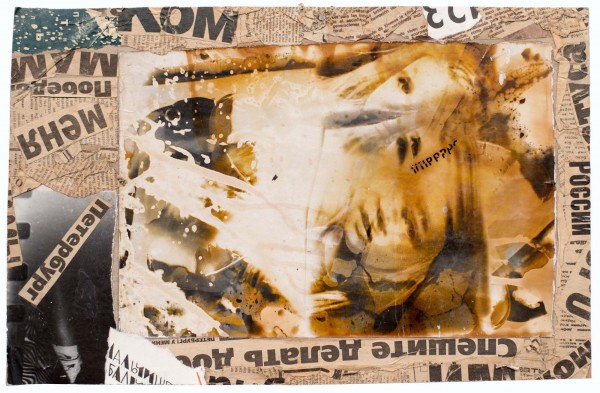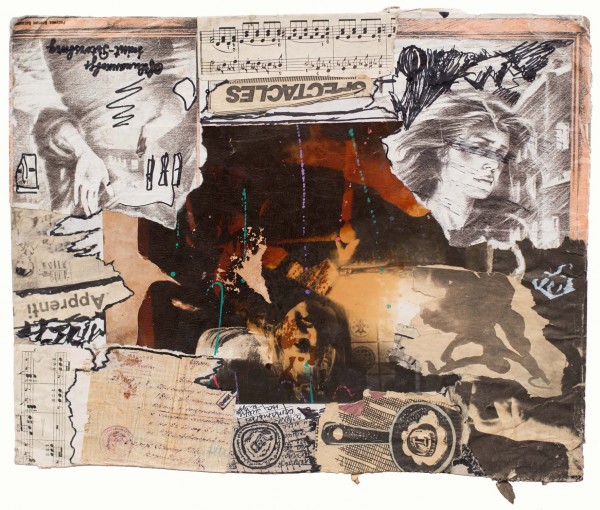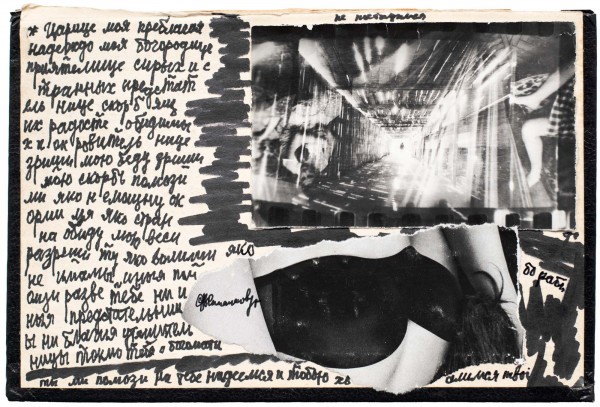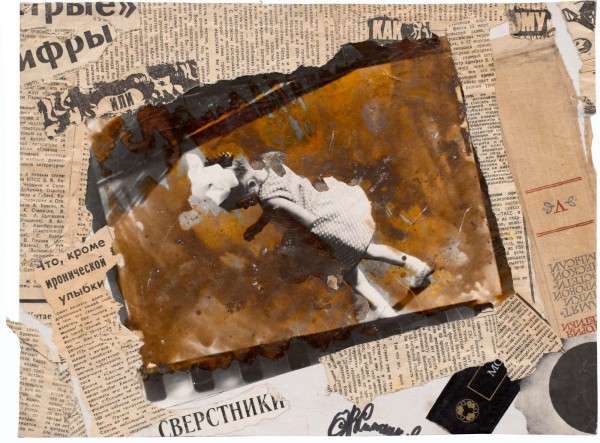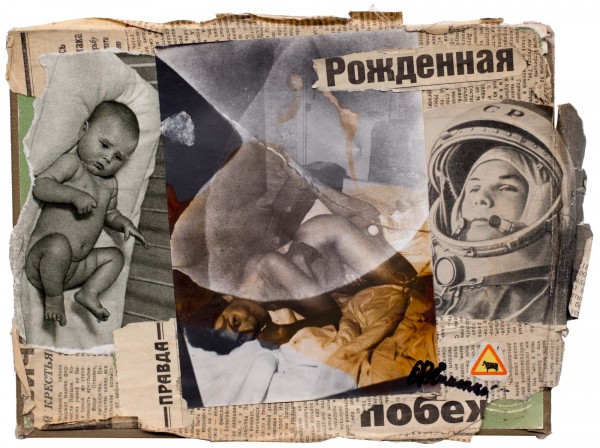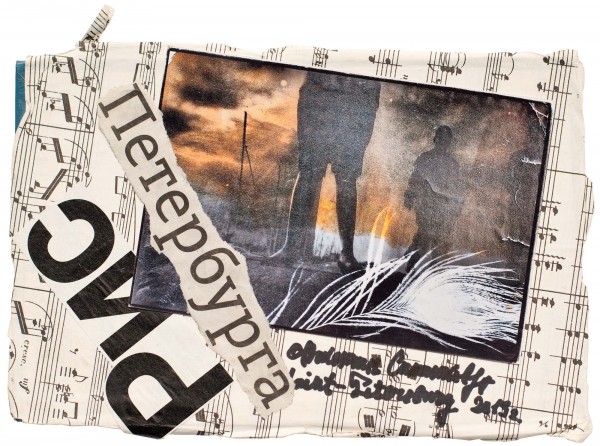Valentin Simankov left home to register at the art school in St. Petersburg, where he studied photography, theater, film, and directing. After two years, he was having profound disagreements with his professors and left the school, feeling Smolensk, that the academic framework killed the artist and creativity. He then choseto “unlearn.” At the time, his photographic work, which was influenced by his studies, was still quite conventional. As a result of family problems, Simankov’s life began to fall apart, and he became engulfed in drugs and alcohol. In 1993, he turned to religion, through which he was able to calm his inner torment. He took a new, personal artistic path, creating photo collages in which he manipulated signs and symbols of society. He works a great deal with superimposition, playing with different kinds of printed paper. A search for an aesthetic is evident—no doubt, the result of his time spent with artworks. Clipping photographs—many of them are images of children and young women—out of newspapers and magazines, sometimes gluing them onto music scores and placing fragments of headlines across them, he tells his own story but also that of his country in a way that the official ideology propagated by the press does not. Although he is a father (he has six daughters and two sons), Simankov lives as a social outcast and sells his works on the street, both in summer and winter, for a few rubles.

